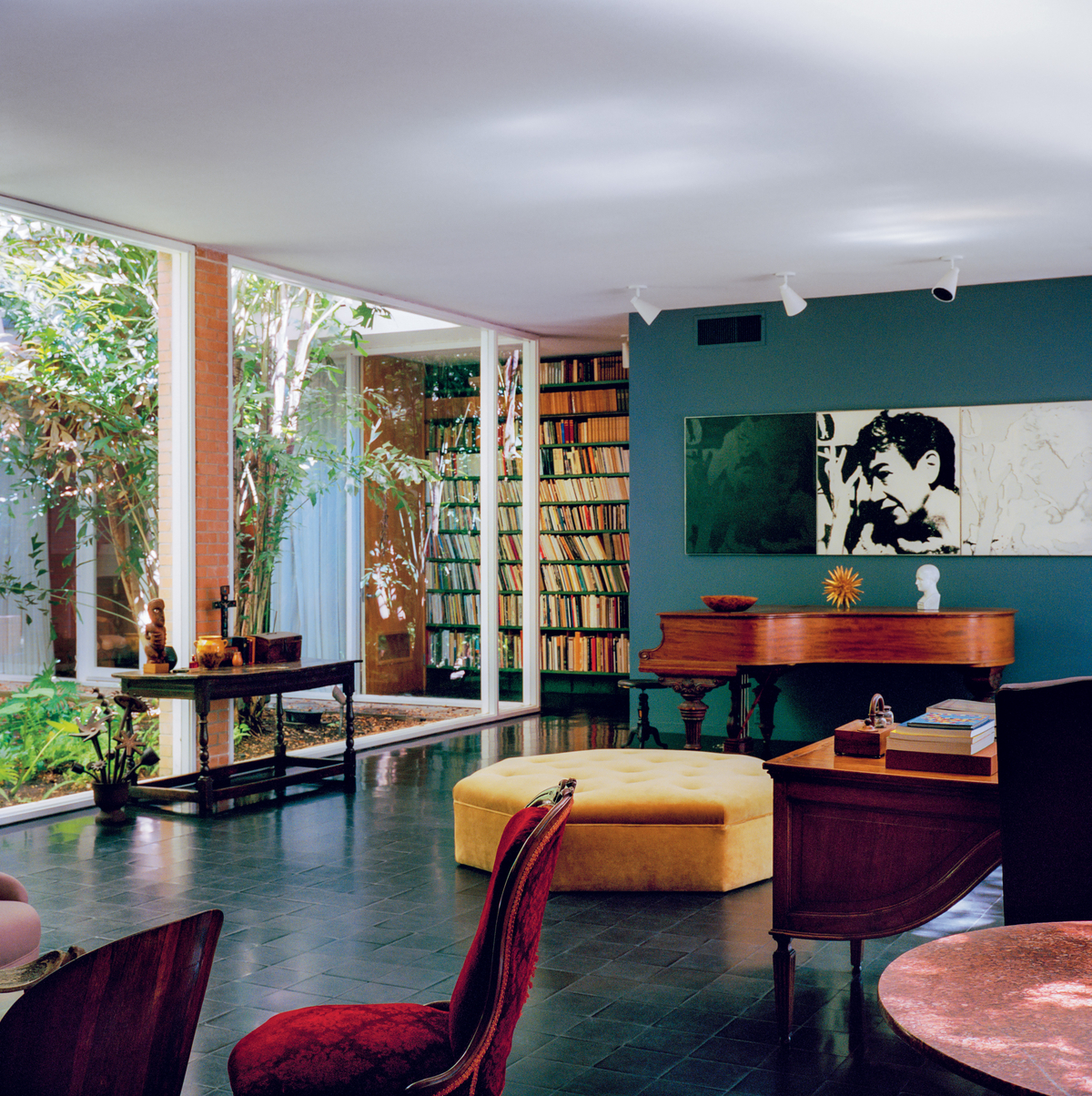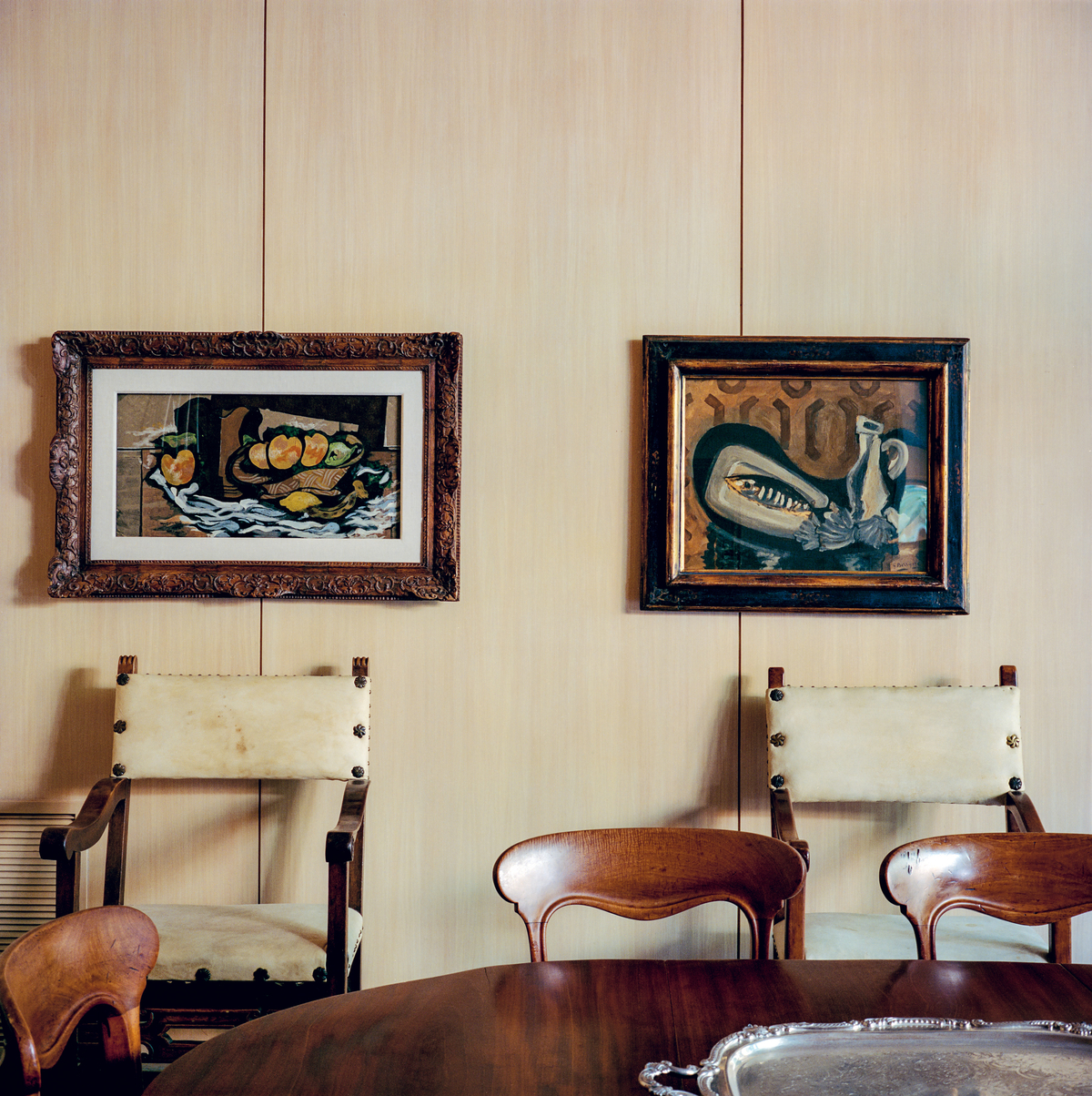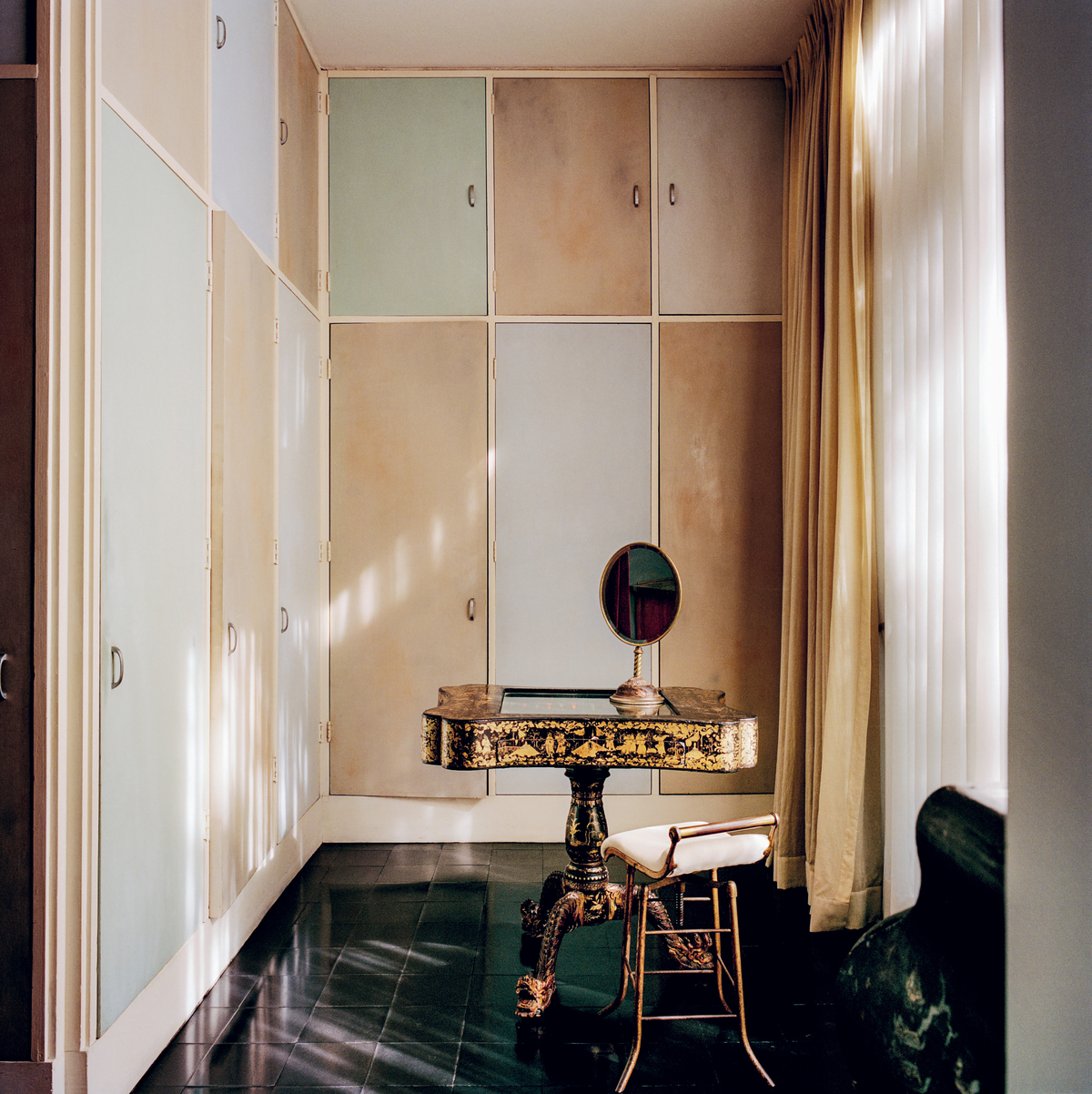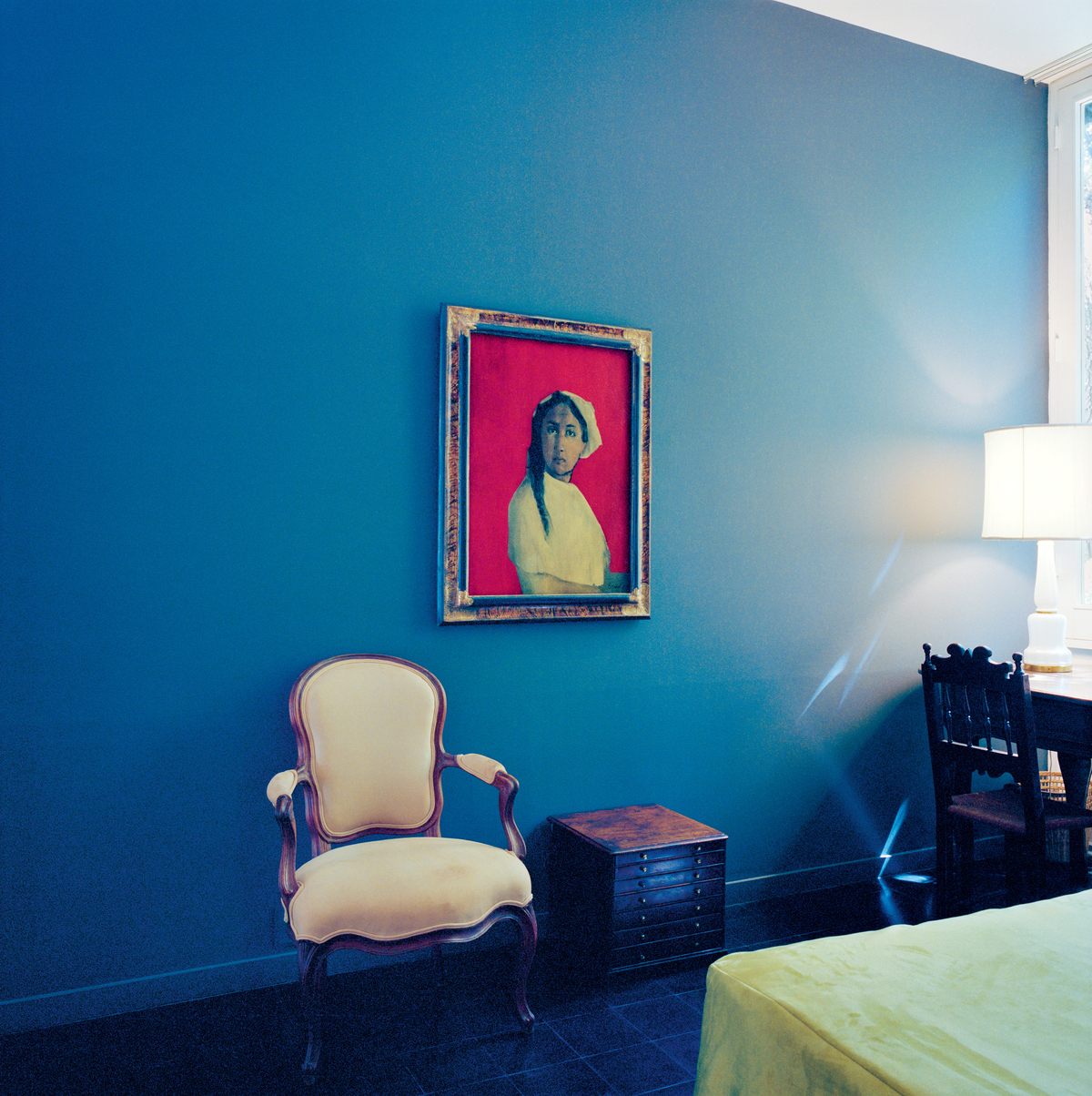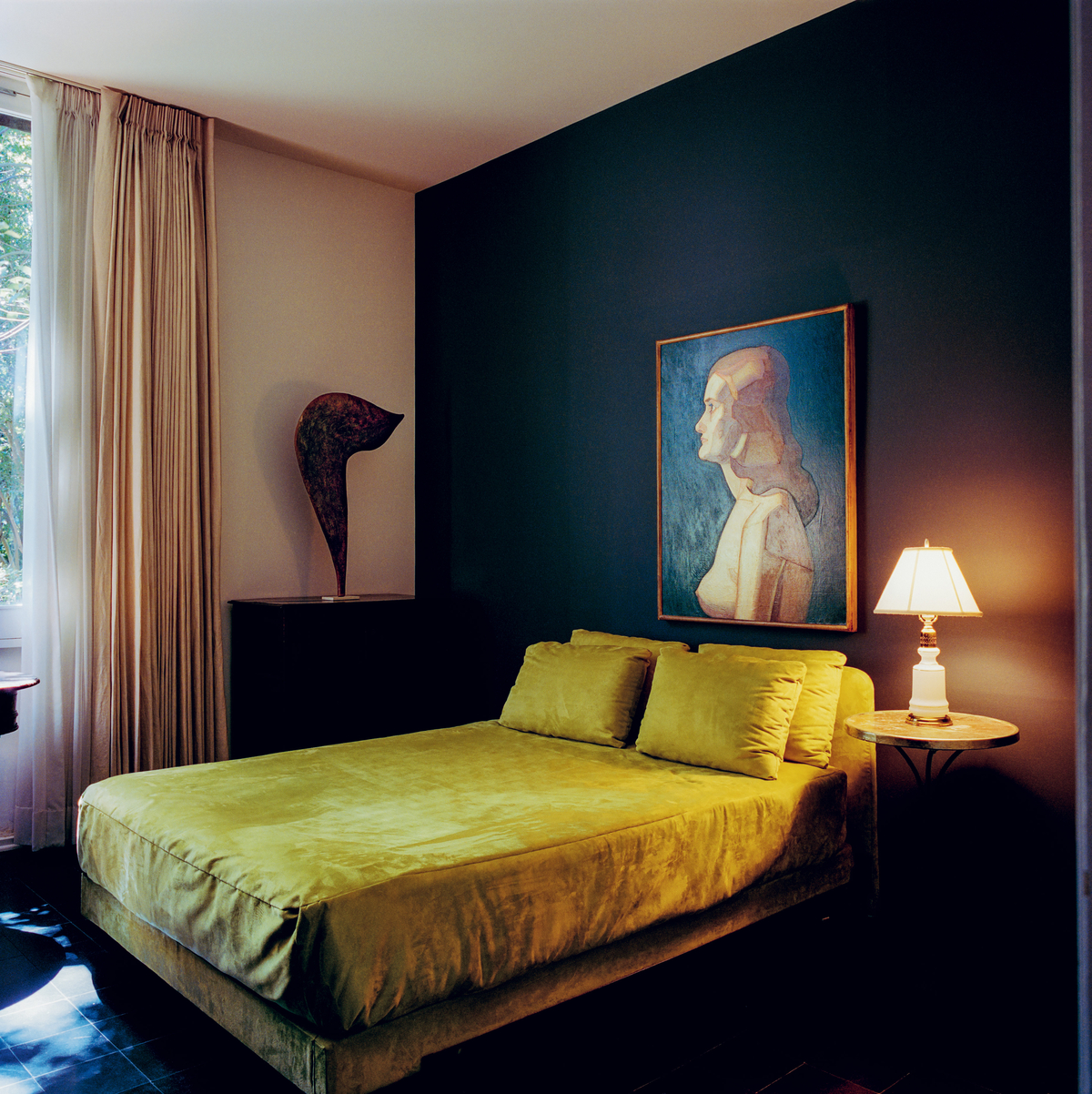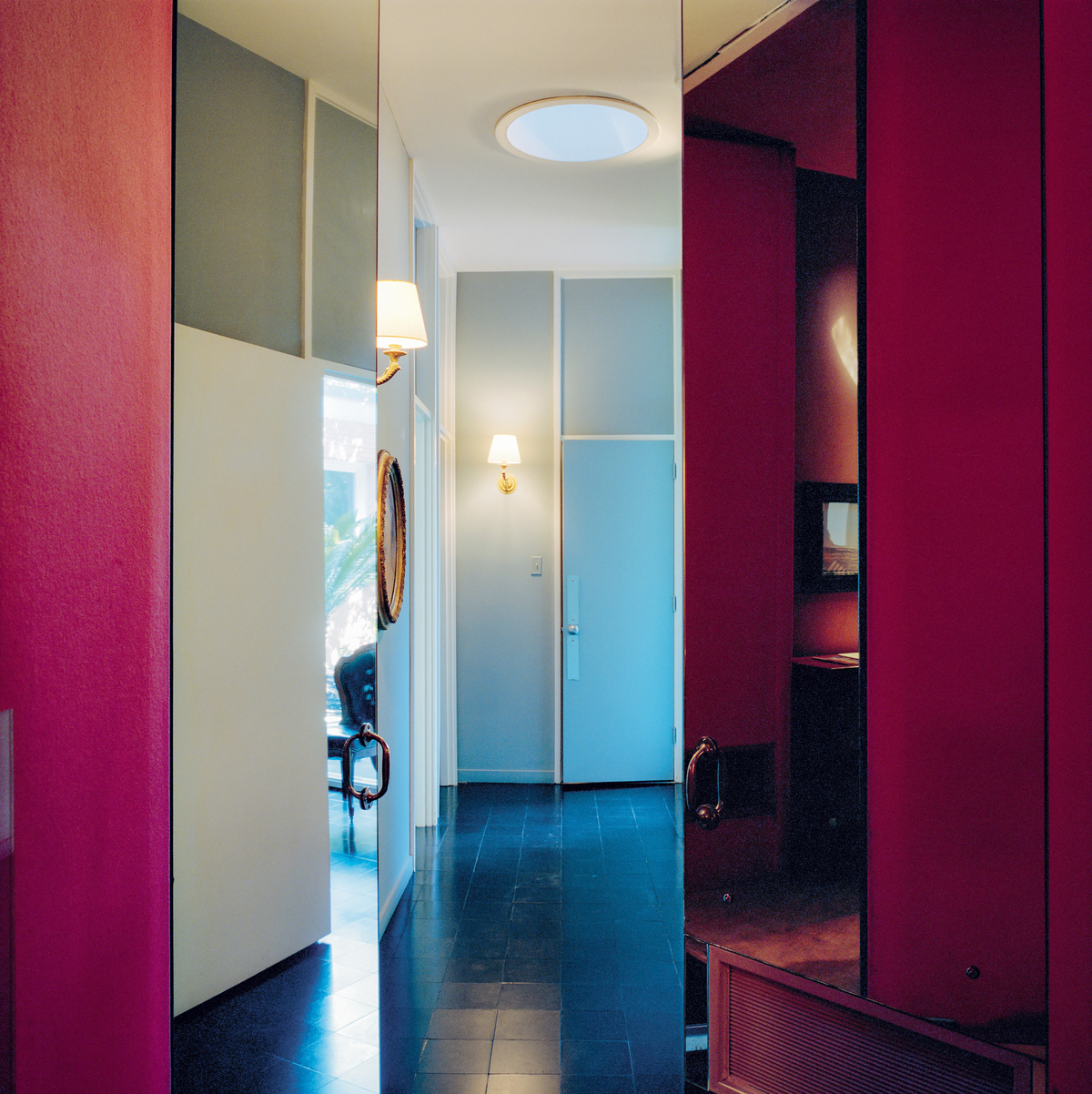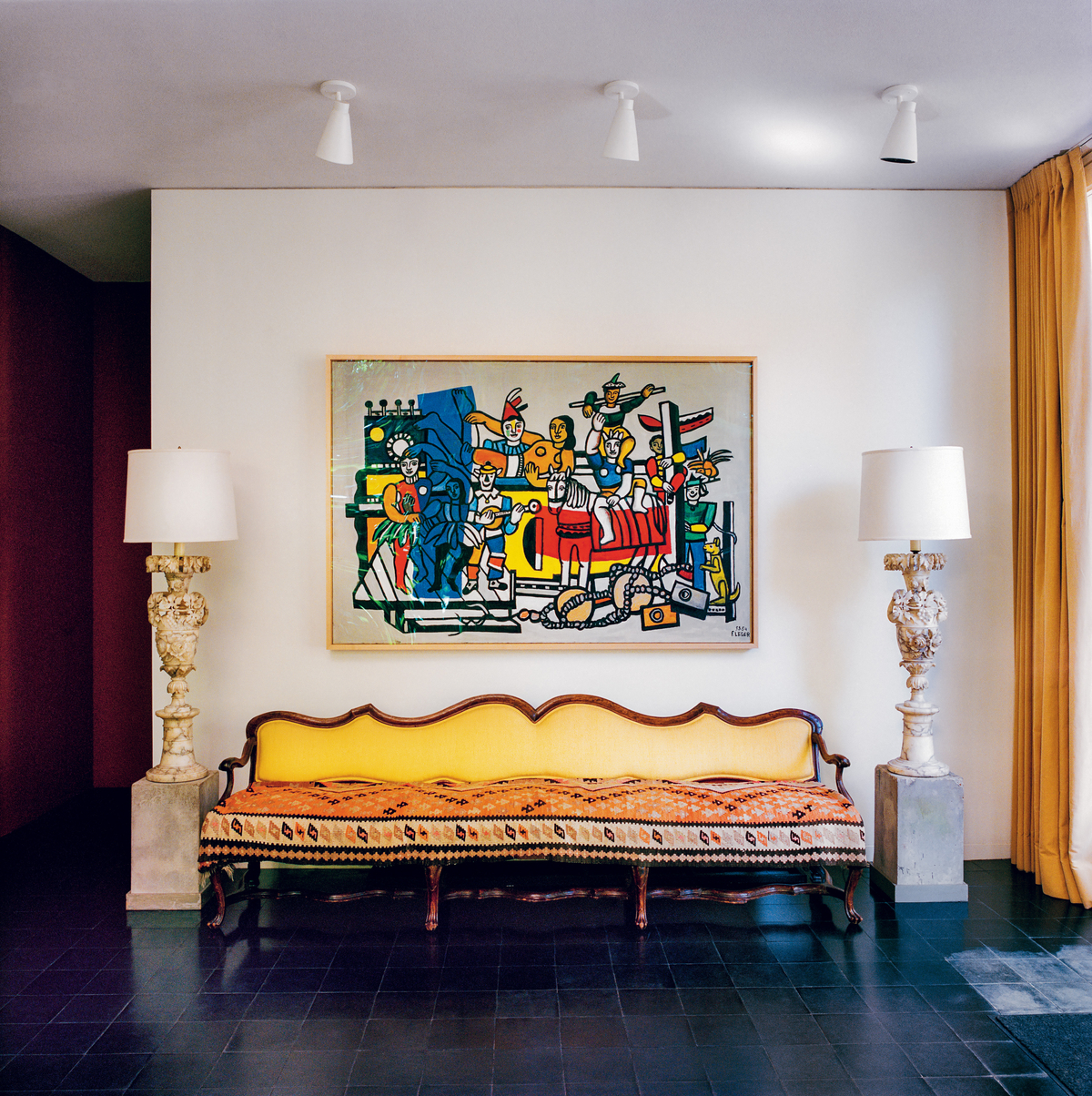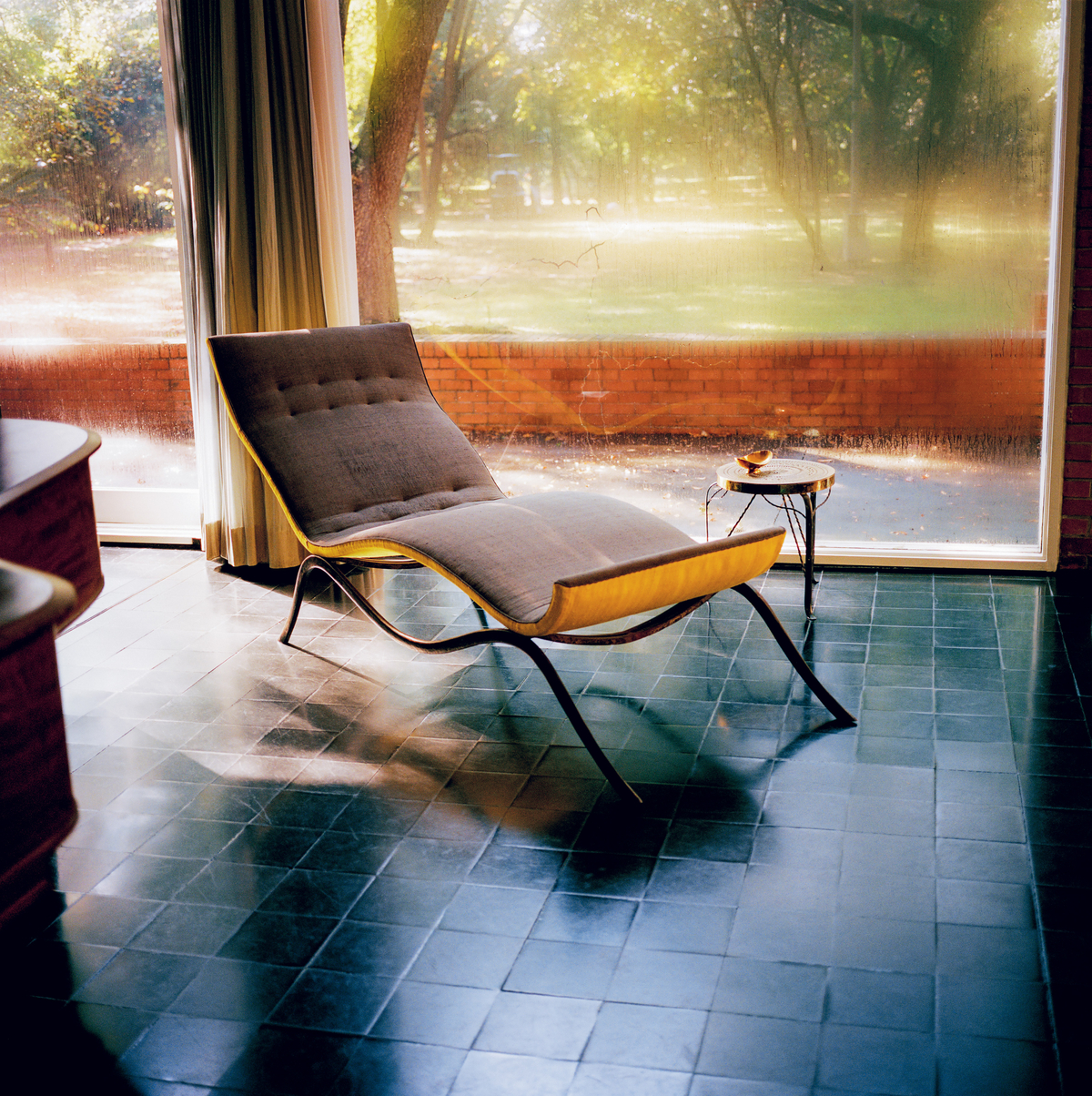In François Halard’s immersive new book, his perfectly imperfect visual sensibility sheds new light on some of the most celebrated artists of his time. Halard—art-world luminary, arbiter of taste, and among the most renowned and prolific interiors photographers—is not even remotely deterred by a little bit of chipped paint. Or crumbling plaster, or cracked tiles, or even missing doorknobs. “It’s a way to show something very special,” he says of photographing the ephemera that comprise a space’s character. Take Louise Bourgeois’s New York home, which Halard captured in 2014 and is one of the nearly two dozen subjects to appear in François Halard: A Visual Diary. “I’m not just photographing the studios and homes of artists,” he says. “I want to appropriate these interiors and interpret them through the medium of photography.”
A sad, sagging mattress, decaying folding chairs, a derelict kitchen that would likely raise an eyebrow from a Housing Authority inspector … all manage to convey a particular charm when immortalized by Halard’s analog and Polaroid cameras, especially when the images are edited into a story by Beda Achermann, the former creative director of the German edition of Men’s Vogue and Halard’s longtime collaborator.
“I wanted to do an anti-Instagram book,” says Halard, railing against the social network’s quick-hit, on-to-the-next visual experience. In A Visual Diary, Halard employs a mishmash of photographs, Polaroids, and handwritten text to try, as he says, “to get closer to people whose approach and sensibility I love.”
“An Anti-Instagram Book”
A Halard primer: He’s a product of Paris; his parents designed furniture and fabric. After attending art school in New York, he was lured to Condé Nast by its storied editorial director Alexander Liberman, and cut his teeth as a photographer for Vanity Fair, Vogue, and House & Garden. Interiors, architecture, fashion—all of it proved interesting. But in the 90s, after Vanity Fair assigned Halard to photograph Cy Twombly, Halard’s body of work became even more varied and robust as he focused his formidable powers on the world’s most mesmerizing artists by capturing and interpreting the interiors that dominate their own aesthetic experiences.
Halard, who splits his time between New York City’s Greenwich Village and his 18th-century hôtel particulier, in Arles, France, does not discriminate against a more polished aesthetic. Take the ornate Belgian estate of Dries Van Noten and Patrick Vangheluwe, where the drama of its Victorian rose gardens is matched by its mirrored, gilded, brocade-draped interiors. Or Marc Jacobs’s Paul Fortune–designed apartment in Paris, a showcase for work by Braque, Currin, and Warhol. And then there is the decidedly more rock ’n’ roll style of Lenny Kravitz, whom Halard first encountered through friends in Harbour Island. “It was kind of funny to have Lenny sending people out of the shoot,” recalls Halard. “He almost asked me if he could be my assistant! … To be able to go into all those places is a way for me to be able to understand what they do, how they make it so special.”
Conjuring the Dead
In some cases, Halard’s work seems to conjure the dead, most profoundly in his photographs of Dominique de Menil’s modernist home, in Houston, designed by the famously restrained Philip Johnson but decorated by the relatively maximalist Charles James. “Very gutsy,” declares Halard—the photographs convey a study in contrast that positively vibrates with the energy of the heiress and collector, who died in 1997.
“The thing they all have in common is that each of them pursues a total look, a total devotion to one aesthetic,” says Halard of his subjects. “In each of the houses, it’s not soft.” —Ashley Baker

